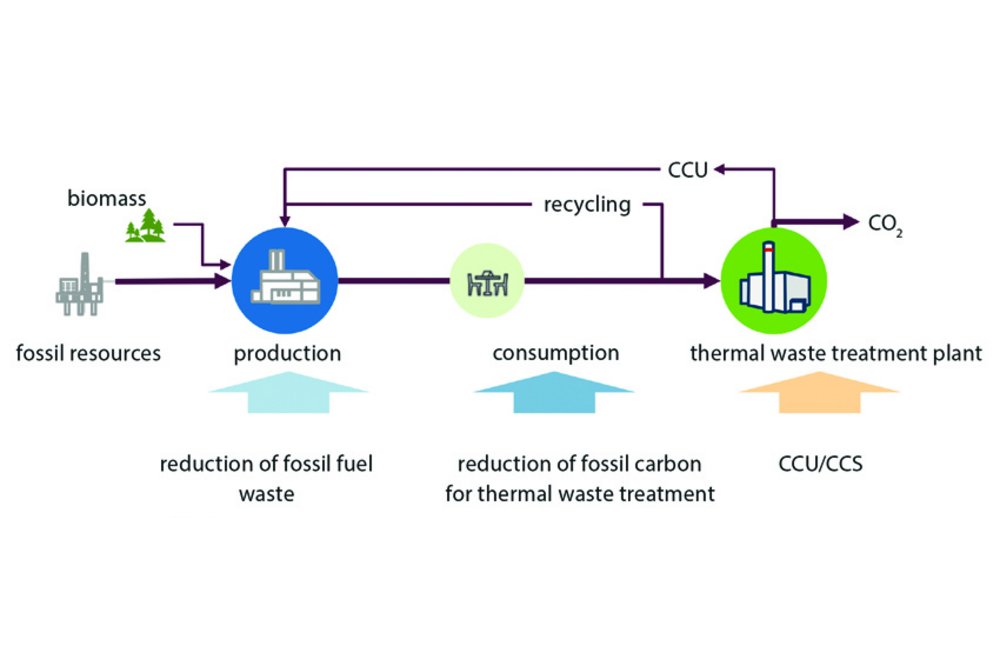CO₂ reduction paths for thermal waste treatment in Bavaria
The bifa study, commissioned by the Bavarian State Ministry for the Environment and Consumer Protection, assesses the potential for capturing and reducing CO2
To achieve greenhouse gas neutrality, all possible ways of reducing emissions must be examined. The waste sector is one of them.
At present, around 3.2 million tonnes of waste are disposed of in 14 municipal waste incinerators in Bavaria every year. The combustion process produces 3.3 million tonnes of CO₂. Solutions must be found for these CO₂ emissions.
The main approaches currently under discussion involve capturing the CO₂ before it is emitted and then either storing it permanently in geological formations (CCS) or using it in other processes (CCU). Amine scrubbing is by far the most advanced of the flue gas CO2 capture technologies. The study also analyses other methods that could be developed for use in the coming years.
CO2 is captured from both fossil and biogenic waste at the thermal waste treatment plants. The separation of the fossil portions corresponds to the concept of CCS and CCU. Separation of the biogenic fractions largely opens the way to negative emissions. Negative emissions will become increasingly important as we approach greenhouse gas neutrality, to offset unavoidable residual emissions elsewhere. The current focus on CCS with fossil emissions from thermal waste treatment should therefore be extended in the future to include biogenic CO₂ emissions and their removal from the biosphere.
In addition, the greenhouse gas reduction potential of a life cycle assessment nature lies in the energetic optimisation of existing plants, in particular through the measures of flue gas heat utilisation, flue gas condensation and heat recovery from turbine exhaust steam.
CCS is not a solution for everything, but rather brings with it new issues and challenges that must be weighed against the opportunities. In an overall climate protection strategy, CCS should be positioned as a subordinate measure to greenhouse gas reduction measures. It should therefore be limited in scope. As a result of this consideration, however, the implementation of CCS in thermal waste treatment appears fundamentally sound.
To pave the way, the study identifies necessary and beneficial steps, including in the areas of regulations, geological CO₂ storage, carbon circular economy, CO₂ transport infrastructure, removing of investment barriers and R&D.
The results of the study have been and will be published in conference papers (Berlin Conference on Waste Management and Energy 2025, Bavarian Waste and Landfill Days 2025, C.A.R.M.E.N. Symposium 2025).
